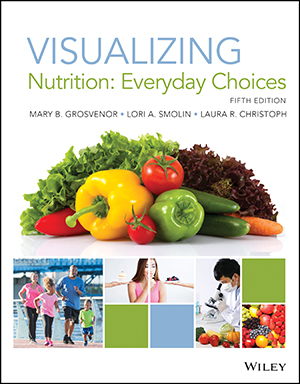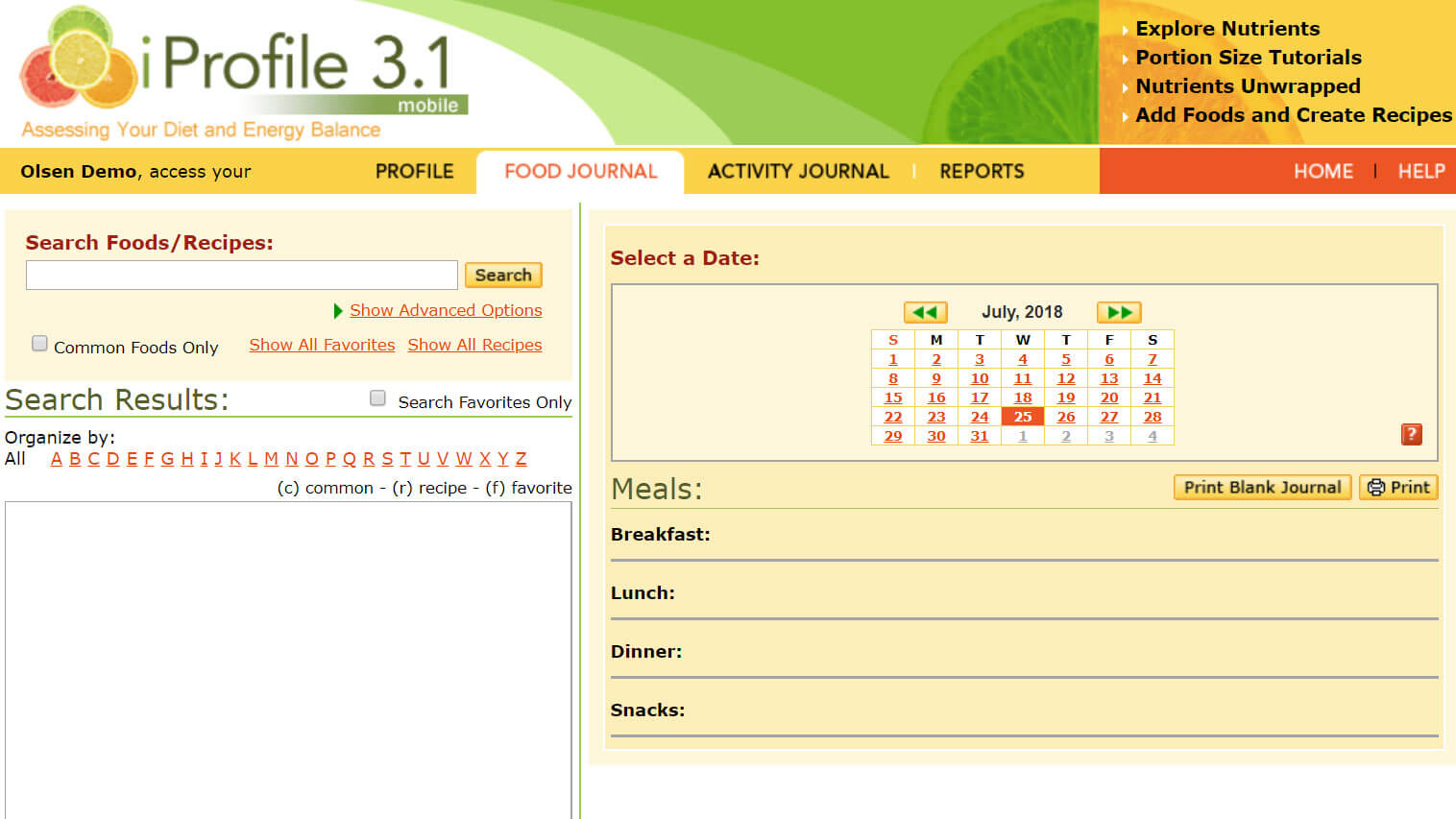
Visualizing Nutrition: Everyday Choices, 5th Edition
By Mary Grosvenor and Lori Smolin
Visualizing Nutrition offers students a valuable opportunity to identify and connect the central issues of nutritional science in a visual approach — offered in a complete digital suite through WileyPLUS.
WileyPLUS provides a clear learning path to understanding as well as the necessary tools for dietary analysis. Robust multimedia resources, such as the “Food for Thought” video series, underscore the importance of nutritional science and demonstrate the relevance of dietary choice in promoting health, preventing disease, and improving overall wellbeing. The premier art program and interactive content make Visualizing Nutrition a sure winner in engaging students and sharing one’s passion for nutrition, all in a convenient course through WileyPLUS.
Schedule a Demo Request Instructor AccountWant to learn more about WileyPLUS? Click Here
Food for Thought
This extensive video suite introduces students to upcoming chapter concepts, underscores the importance of nutritional choices on health, illuminates difficult scientific concepts, and points out helpful practice opportunities and resources in WileyPLUS to help them focus their time and study effectively. Assignable question sets are available for all videos. Instructor videos and an instructor’s manual demonstrate section-specific teaching tips and strategies suitable for different types of classroom environments, including online and flipped classrooms.

iProfile Dietary Analysis Software:
This feature includes information on over 58,000 foods, including ethnic, cultural, and brand-name choices. Users can track intake, add foods, and calculate the impact of physical activity. Serving size animations, a self-discovery survey, single-nutrient reports, menu planning, and more make it a valuable tool.
What’s New
-
- The most recent nutrition, activity, and health guidelines outlined by 2020-2025 DGA
- Expanded coverage on emerging nutrition topics such as the importance of dietary patterns and the role of inflammation in nutrition-related disease.
- New boxed features address hot topics of interest to students such as ketogenic diets and new-age plant-based burgers.
- 45 new illustrations and photos to enhance visual learning and help students grasp concepts such as food environment and nutrient bioavailability, why lactose intolerance causes symptoms, and how diabetes affects blood glucose regulation.
- “What a Scientist Sees” section on evaluating ads for supplements now addresses a hypothetical weight loss supplement.
- New “Debate” boxes including: Do DNA-Based Diets Improve Health Outcomes? How involved should the government be in your food choices? Is sugar making us sick? Will going vegan save the planet? Does a healthy diet cost more?
- • “What is Happening in This Picture” highlights food deserts in urban areas and the difficulties in obtaining a healthy diet when most food comes from the corner store.
- “Thinking it Through” case study on choosing a healthy diet follows the dietary issues of one student throughout her day.
- Updated case study on snacks for exercise that examines the different the types of snack bars available to athletes
- New “What Should I Eat” discussion on maintaining a healthy colon

MARY GROSVENOR holds a Bachelor’s Degree in English and a Master’s Degree in Nutrition Science, affording her an ideal background for nutrition writing. She is a registered dietitian and has worked in clinical and research nutrition in hospitals and communities large and small in the western United States. She has an extensive career teaching at community colleges and has published research articles on nutritional assessment and nutrition and cancer. Her training and experience provide practical insights into the application and presentation of the science found in Visualizing Nutrition.

LORI SMOLIN holds a BS in Nutritional Science from Cornell University, where she studied human nutrition and food science. She received a doctorate from the University of Wisconsin, Madison, focusing on B vitamins, homocysteine accumulation and metabolism. She completed post-doctoral training at the Harbor-UCLA Medical Center, where she studied human obesity, and the University of California San Diego, where she studied genetic defects in amino acid metabolism. Dr. Smolin is currently at the University of Connecticut, where she has taught both in the Department of Nutrition Science and the Department of Molecular and Cell Biology.

LAURA CHRISTOPH earned her PhD in Public Health from the University of Massachusetts at Amherst. Laura teaches Introduction to Public Health, Human Health and Nutrition, Introduction to Global Health, and Freshman Year Inquiry: Health and Wellness at of Franklin Pierce University, New Hampshire. Her research interests and areas of expertise include childhood obesity, food insecurity, sports nutrition, and eating disorders.
1. Nutrition: Everyday Choices
2. Guidelines for a Healthy Diet
3. Digestion: From Meals to Molecules
4. Carbohydrates: Sugars, Starches, and Fibers
5. Lipids: Fats, Phospholipids, and Sterols
6. Proteins and Amino Acids
7. Vitamins
8. Water and Minerals
9. Energy Balance and Weight Management
10. Nutrition, Fitness, and Physical Activity
11. Nutrition During Pregnancy and Infancy
12. Nutrition from 1 to 100
13. How Safe Is Our Food Supply?
14. Feeding the World
Appendix: Metabolism (online only)

